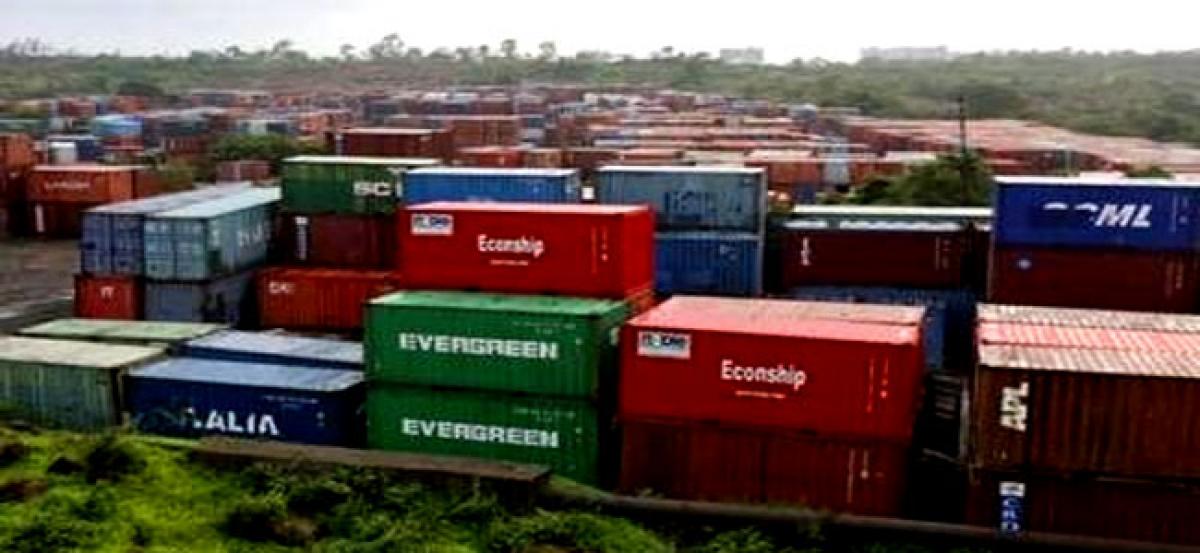Live
- Americans increasingly vote along class lines, not racial ones: Report
- Chandrababu's brother Rammurthy Naidu Passes Away in Hyderabad
- Russia restricts enriched uranium exports to US
- South African President orders immediate closure of tuck shops linked to food poisoning cases
- Study explains mechanisms behind food poisoning, gut infections
- Telangana residential school student commits suicide
- Cases of 'walking pneumonia' rise in US capital, joining national trend
- UN warns armed violence deepens humanitarian crisis in Sudan
- Maha Vikas Aghadi will win over 160 seats, form government in Maharashtra, says Shivakumar
- 6 Factors to Consider While Choosing the Right IVF Clinic in Hyderabad
Just In

The US today challenged Indian export subsidies schemes at the World Trade Organisation, saying these programmes harm American workers by creating an \"uneven\" playing field, officials said.
WASHINGTON: The US today challenged Indian export subsidies schemes at the World Trade Organisation, saying these programmes harm American workers by creating an "uneven" playing field, officials said.
HIGHLIGHTS
- US trade representative said that export subsidy programmes harm American workers by creating an uneven playing field on which they must compete.
- According to the Indian govt documents, thousands of Indian companies are receiving benefits totaling to over $7 billion annually from these programs.
The US Trade Representative (USTR) argued that at least half a dozen Indian programmes provide financial benefits to Indian exporters, which allow them to sell their goods more cheaply to the detriment of American workers and manufacturers.
These programs are: the Merchandise Exports from India Scheme; Export Oriented Units Scheme and sector specific schemes, including Electronics Hardware Technology Parks Scheme, Special Economic Zones, Export Promotion Capital Goods Scheme and Duty Free Imports for Exporters Programme.
"These export subsidy programmes harm American workers by creating an uneven playing field on which they must compete," said Lighthizer.
"USTR will continue to hold our trading partners accountable by vigorously enforcing US rights under our trade agreements and by promoting fair and reciprocal trade through all available tools, including the WTO," Lighthizer said.
The announcement from Lighthizer came while Indian Foreign Secretary Vijay Gokhale was on his maiden visit to the US. He was scheduled to hold meetings with the USTR.
In a statement, the USTR alleged that through these programmes, India is given exemption from certain duties, taxes, and fees which benefits numerous Indian exporters, including producers of steel products, pharmaceuticals, chemicals, information technology products, textiles, and apparel.
According to the Indian government documents, thousands of Indian companies are receiving benefits totaling to over $7 billion annually from these programs.
The USTR said export subsidies provide an unfair competitive advantage to recipients.
A limited exception to this rule is for specified developing countries that may continue to provide export subsidies temporarily until they reach a defined economic benchmark. India was initially within this group, but it surpassed the benchmark in 2015.
India's exemption has expired, but India has not withdrawn its export subsidies, USTR alleged."In fact, India has increased the size and scope of these programs," USTR charged.
For example, India introduced the Merchandise Exports from India Scheme in 2015, which has rapidly expanded to include more than 8,000 eligible products, nearly double the number of products covered at its inception, it alleged.
Exports from Special Economic Zones increased over 6,000 per cent from 2000 to 2017, and in 2016, exports from Special Economic Zones accounted for over $82 billion in exports, or 30 per cent of India's export volume.
Exports from the Export Oriented Units Scheme and sector specific schemes, including Electronics Hardware Technology Parks Scheme, increased by over 160 per cent from 2000 to 2016, it asserted.
Noting that consultations are the first step in the WTO dispute settlement process, The USTR said if the US and India are not able to reach a mutually agreed solution through consultations, it may request the establishment of a WTO dispute settlement panel to review the matter.

© 2024 Hyderabad Media House Limited/The Hans India. All rights reserved. Powered by hocalwire.com







